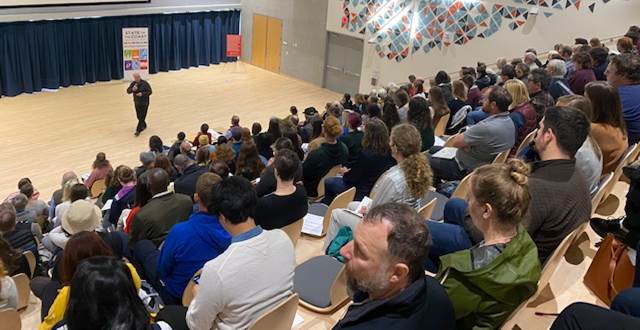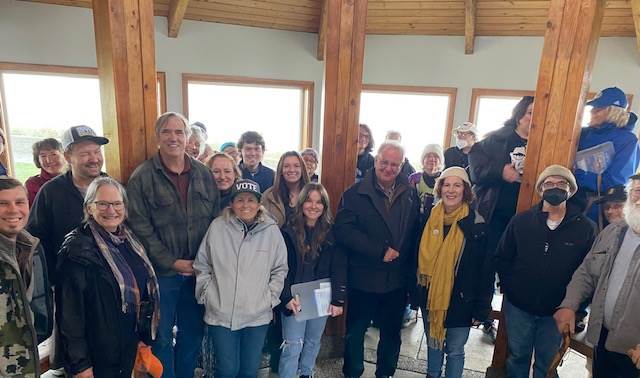| Saturday morning I spoke to a packed room at Hatfield as part of the State of the Coast summit. For many in the room, it was a first chance to see the new Marine Science Building that opened two years ago.
My topic was infrastructure on the Central Coast. I tried to cover the challenges, opportunities, and successes. Some of you have heard me talk about this before.
Our most pressing challenge is to replace the aging and seismically vulnerable Big Creek Dams that provide drinking water to Newport. I told the audience that had the recent Linn County earthquake been instead in Siletz, the dams may well have failed. There are homes a quarter mile downhill and people would have died. Highway 101 would have been breached for an indeterminate amount of time. And without water, tourism, fishing, and fish processing, our research hub that includes Hatfield, NOAA, PacWave, and the Aquarium would all be lost.
The cost of dam replacement will exceed $80 million. Newport has already committed $6 million – about $2500 for every tax lot in the city. The legislature approved $14 million more. And now we are hoping Congress will close the loop with $60 million before the end of the year.
I use Newport as a pressing example of how small towns face big infrastructure challenges that local taxpayers cannot afford to pay for alone. We need state and federal help.
I talked about water and sewer in Waldport, ports in Toledo and Newport, fire stations in Eddyville, docks in Depoe Bay, parks and plazas in Lincoln City, and repairing fire damage in Otis. We’re making progress on those projects but there are many more in the que. Addressing these challenges will affect our cost of living, quality of life, and local economies.
For an example of opportunities, I reminded the crowd of ongoing plans to construct a major container facility at the Port of Coos Bay. Coos Bay is already the largest coastal deep-water shipping port between San Francisco and Seattle. A shipping terminal could bring as many as two thousand jobs to the area in a part of Oregon that has suffered as natural resource industries have changed.
Finally, I wanted to talk about our successes. Too often we forget our victories or take them for granted. No one worries when water comes out of the tap. They only worry when it stops.
Highway 20 is a major success. Ten years ago the state considered walking away after the first effort to fix this critical arterial colossally flopped. But we convinced the Transportation Commission to try again and ultimately bypassed the most deadly stretch of highway in Oregon, reduced commuting times from Newport to Philomath, and created a pretty nice drive in the process.
I also told the crowd that the building they were sitting in was a success. If we will ever begin to address the scourge of climate disruption, changing ocean chemistry, or threats to marine life and industries that rely on them, I believe, without exaggeration, that the Hatfield Marine Science Center will play a leading role.
The Gladys Valley Marine Studies Building is remarkably beautiful. But that belies the remarkable engineering it relies on. The Center may well be the most advanced seismic and tsunami-resilient structure in the world – including a ramp that allows people to evacuate to the tsunami-safe roof. I related a recent conversation with former OSU President Ed Ray who greeted me with the words, “OSU can lead us into the future or lead the retreat”. He was reminding me of my own comments when the debate raged about whether we should build the building. Our cherished coastline where we live, work, and love will someday experience a major event. We can either abandon our homes and move away, or we can better prepare. This state-of-the-art, state of architecture, and state of engineering structure should play a major role in helping us learn to better prepare. |








